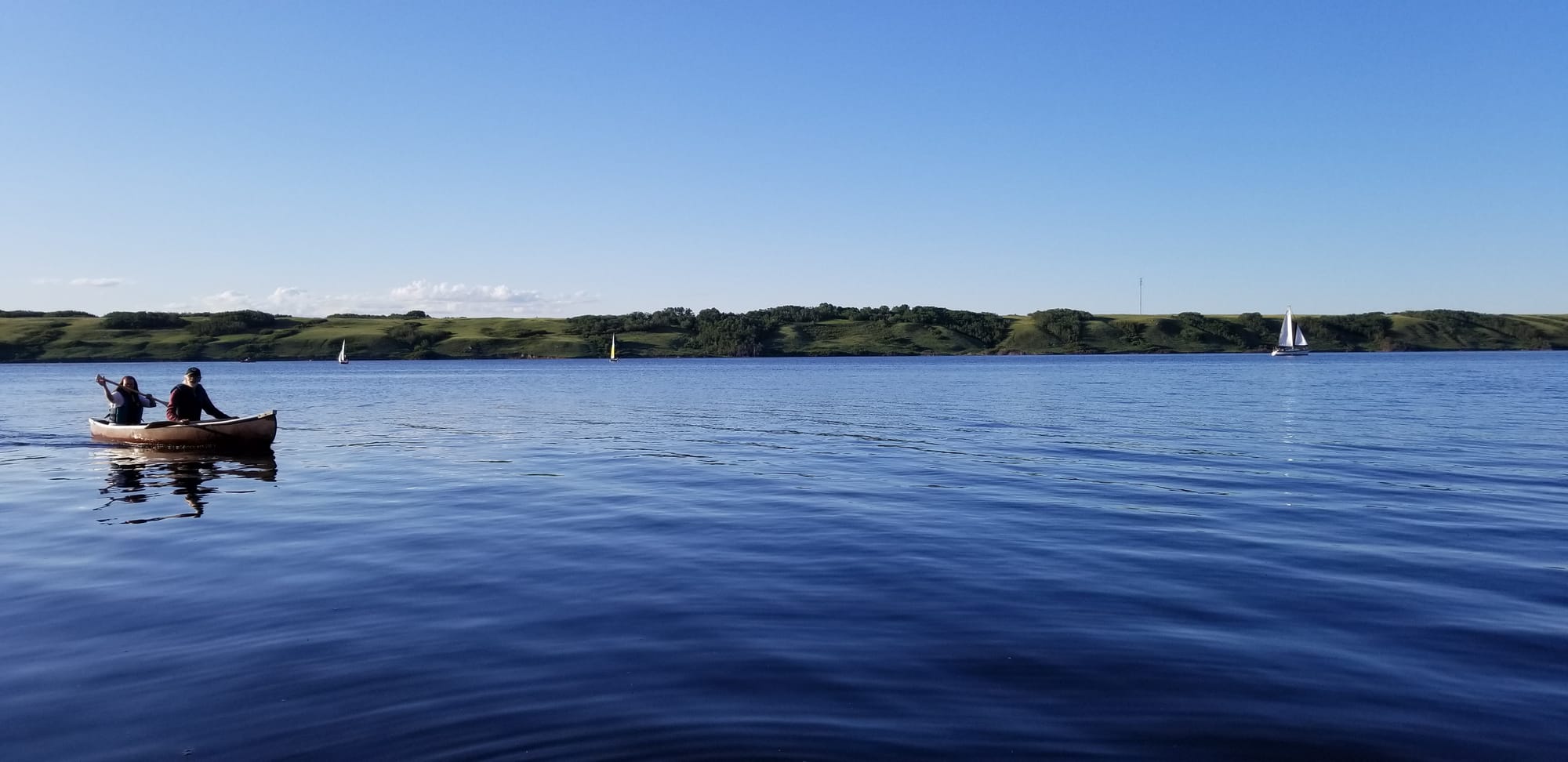There's a lake in Saskatchewan where you literally can't sink. I'm not talking about doggy paddling really hard or wearing a life jacket. I mean you physically cannot go under the water even if you try.
Little Manitou Lake sits about an hour and a half southeast of Saskatoon, looking pretty unremarkable from Highway 365. Bluish-brown water, small beach, tiny village. But step into the water and physics gets weird. Your legs float up. Your body bobs like a pool noodle. You can lie back and read a book without moving a muscle.

The Science of Not Sinking
Here's what's happening: this lake is salty as hell. We're talking 180 g/L of salt - that's five times saltier than the ocean. All those minerals come from underground springs feeding into what geologists call a terminal lake (basically a lake with no outlet, so everything that flows in stays in).

The water gets its bronzy color from all the dissolved minerals - sodium, magnesium, potassium. On windy days, it whips up foam that piles on the shore like dirty snow. Not exactly postcard material, but the floating experience makes up for the aesthetics.
Oh, and the only things living in there? Brine shrimp. That's it. Too salty for fish, perfect for tiny crustaceans that look like sea monkeys.
Sacred Waters, Long Before Instagram
Indigenous peoples figured out this lake was special way before any resort developers showed up. Dan Kennedy, an Assiniboine man of Montmartre Reserve told stories about two men sick with smallpox in 1837 who recovered after bathing in the waters.
The name Manitou means Great Spirit in Cree. Tribes traveled from the Great Lakes to the Rockies to heal here. They'd put down their weapons at the water's edge - that's how sacred this place was.
By the 1930s, the government turned it into one of Saskatchewan's first provincial parks, part of a Depression-era job creation scheme. Hotels went up. Dance halls opened. Then the Depression killed the party for a while. The 1980s brought it back with a proper spa, and now you can float year-round in heated indoor pools (minus the brine shrimp - they filter those out).
What You'll Find Today
Good news for 2025: the water's clean. After a rough 2022 when toxic algae levels hit 600 times the safe limit, recent reports show it's all clear for swimming.
The village of Manitou Beach (population: 300) knows exactly what it is. There's Danceland, where you can still catch live bands. The Salty Cinema Drive-In Theatre, because Saskatchewan still does drive-ins right. Golf course, campground, restaurants that know their way around a burger.
The main attraction is Manitou Springs Resort with its "Canada's largest indoor mineral spa". They've got 102 rooms and pools heated between 93 and 103 degrees. Perfect for February when it's minus-thirty outside and you want to pretend you're somewhere tropical.

Why It Works
Look, I'm not here to sell you on miracle cures. The water won't fix your bad knee or make you look ten years younger. What it will do is let you float effortlessly in warm, mineral-rich water while snow falls outside.
"I can't believe I've lived my entire life in Saskatchewan and didn't know about our very own Dead Sea.
Skip the crowds at the actual Dead Sea. Our version might be half as salty, but it's got that Canadian charm - unpretentious, hiding in plain sight on the Saskatchewan prairie. Plus, you can grab a beer at Mike's afterward without dealing with international roaming charges.
Just don't open your mouth underwater. Seriously. That's 180 grams per litre of regret right there.






Join the Conversation